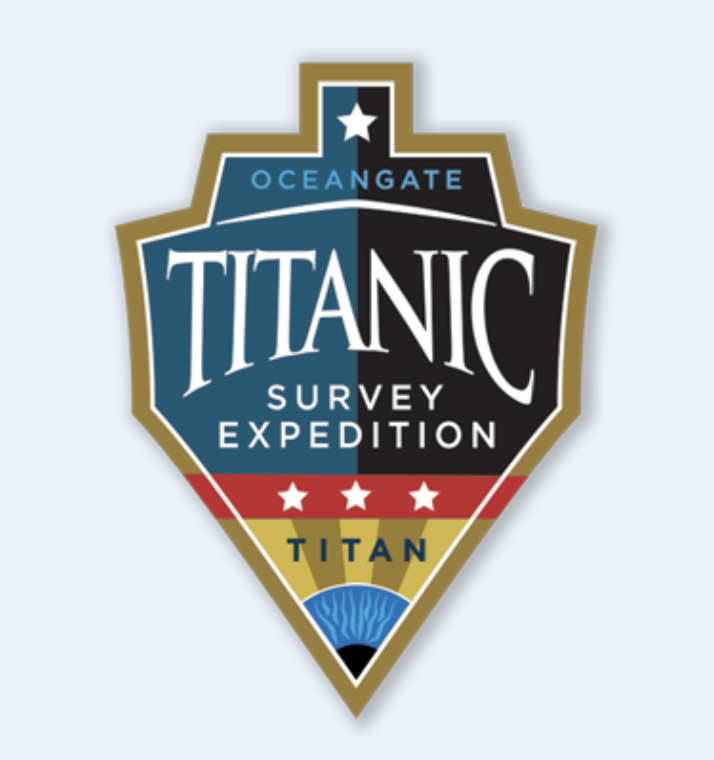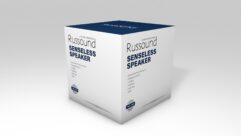
UPDATE 6/20: A rescue operation continues to find the currently missing submersible and its five passengers. The Daiy Mail has live updates
Everett, WA – March 13, 2019 — TITANIC HISTORY WILL BE PRESERVED for future generations using both manned and unmanned submersibles donning an array of high-resolution 4K cameras and a laser scanner to create a fully explorable, immersive experience. The inaugural OceanGate Survey Expedition is the first to document the historic wreck and debris field at this level of detail. It will create the first photorealistic virtual 3-D model of the site. The expedition will embark this June, taking citizen explorers along on six 10-day preservation missions.
To deliver a real-world experience that allows participants to move in all directions and explore the wreck and debris field the team will capture images using cameras mounted both on a remotely operated underwater vehicle (ROV) and on the OceanGate Inc. submersible, Titan, that will also have a dynamic underwater laser scanner from 2G Robotics. High-density point cloud data from the laser scans forms a digital skeleton that the photographs are attached to like a skin to form a high-definition virtual model.
Corey Jaskolski, a pioneer in the advancement of 3-D scanning technology to document and preserve important cultural and natural sites, will join the expedition to process the laser and photographic documentation of the shipwreck.
My hope is that our work with Virtual Wonders will rekindle the fascination with the mysteries of our oceans that pioneering explorers like Jacques Cousteau created in me when I was young,says Stockton Rush, Founder and CEO, OceanGate Inc.Still, today, so little is still known about the 71 percent of the earth’s surface that lies beneath our oceans. The ability to provide a first-of-its-kind, front-row seat on a submersible that goes 3800 meters below the surface of the ocean is what gets me out of bed every morning. I can’t imagine a more rewarding mission than documenting this historic site and inspiring future generations of deep-sea explorers,continues Rush.
Documentation of the Titanic at this level of quality has never been captured before and a very select few have had the opportunity to see the Titanic site in personsays Mark Bauman, Founder and CEO, Virtual Wonders.There’s nothing like being there first-hand, yet technology has come a long way in the last 14 years since the last manned submersible visit to the Titanic. Today, virtual reality makes rare experiences available to scientists, educators, historians, students and aspiring explorers. Providing this truly immersive, experiential educational resource is certain to inspire next-generation explorers. Plus, imagine video games that educate while delivering history to museums or even your living room,says Bauman.
The annual survey expedition will document the Titanic wreck and debris field over time so scientists can study how quickly the wreck is decaying while ensuring his important historical site is preserved for future generations. OceanGate offers opportunities for up to nine citizen explorers to play active roles as Mission Specialists during each of its six 10-day missions which are nearly fully subscribed for 2019 and the company is taking applications for 2020. Aspiring Mission Specialists should contact OceanGate right away for qualifications, available dates and additional details.
About OceanGate Expeditions:
OceanGate Expeditions has assembled a team of undersea explorers, scientists, and filmmakers who are dedicated to manned exploration of the undersea world. Not satisfied with scratching the surface of the ocean near the shoreline, OceanGate Expeditions uses manned submersibles to create expeditions at depths far deeper than can be reached with SCUBA. The organization conducts undersea expeditions to explore and document the 95% of the seafloor that man has rarely visited including iconic shipwrecks, hydrothermal vents, deep-sea canyons, and uncommon biological events around the world. These expeditions, to depths approaching 4,000 meters (13,000 feet), provide rare opportunities for citizen explorers to observe the mysteries of the deep sea and expand our understanding of our home, earth, the blue planet.
About Virtual Wonders:
Virtual Wonders captures ultra-high-resolution 3D data of the natural and cultural wonders of the world, for use in VR, AR, traveling exhibits, educational interactives, console and mobile gaming, virtual film sets, archival still and video images, and science. We share a portion of our profits to protect each site. Visit www.virtualwonders.com.










